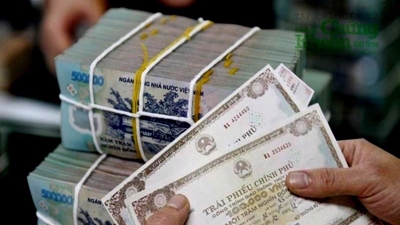Digital revolution just beginning in financial services
Mr. Shayan Hazir, Chief Digital Officer, ASEAN, HSBC, looks at how technology has changed access to financial services and how such services are set to change.

There have been some positive developments that have begun to build the foundations of a vanguard moment in banking. The number of cashless transactions globally is expected to almost triple to 3 trillion between 2020 and 2030, with Asia-Pacific predicted to grow the fastest, with cashless transactions growing 109 per cent to 2025. Consumer payments are now multi-platform and almost instantaneous in many cases.
AI is playing a more significant role in loan decisions. Some financial institutions, including HSBC, have harnessed AI to improve individual investment decisions. And blockchain is starting to make inroads into accelerating trade finance and the proliferation of digital assets for example. We are also beginning to see open banking capabilities becoming more common with the advent of open APIs that continue to enhance customer access to beyond banking capabilities.
These are significant improvements, but there is much that has not changed. We may no longer use checks for everyday business, but we still have checking accounts that would be instantly recognizable to the conventional generation. Much SME and corporate banking is still subject to the shortcomings, including slow transactions and incompatible systems. And trade finance still generates a mountain of paperwork, to name just a few issues.
Even cryptocurrencies, for all the promises of revolutionary change that accompanied their birth, have proven too slow, energy intensive, and volatile to be scalable to the point where they might challenge traditional currencies.
New technology and almost universal connectivity have revolutionized how people and companies interact with their financial service providers, but the grand revolution in the nature of the financial services seems to have stalled. If the sub-text of the digital banking promise was new services accessed in new ways, the delivery of new services hasn’t kept up with the revolution in new channels.
Financial services is still an industry in transition. Bank margins have fallen by 25 per cent over the past 15 years and markets are worried about future profit growth, and a report from Boston Consulting estimates that less than a third of banks are investing in digital financial ecosystems in a meaningful way. However, as cloud computing, open APIs, and embedded finance reach an inflection point, their intersection with emerging technologies like blockchain / distributed ledger technology, AI, and quantum computing will create a digital “Big Bang” that will change financial services beyond recognition.
Take for example this not-so-distant future scenario, when blockchain, generative AI, and environmental, social, governance (ESG) data adoption are commonplace. A Chief Financial Officer (CFO) of a large multinational corporation is responsible for managing the company’s finances and ensuring ESG compliance. With the use of blockchain, the CFO is able to ensure transparency in its global supply chain.
Every product they manufacture has a unique blockchain-based digital identity that records its entire journey from raw materials to distribution. The company will also be able to leverage embedded finance solutions to streamline payments within its supply chain. Smart contracts on the blockchain to automatically trigger payments to suppliers upon successful delivery and verification of ESG compliance. This reduces administrative overheads and ensures that funds are allocated efficiently.
Likewise, on the consumer side, the integration of blockchain and AI into daily routines will result in behavioral shifts that will have enormous impact beyond the banking industry. Some areas that will likely transform in the next five years include:
- Product Traceability: Consumers using their smartphone to scan QR codes on products in the grocery store or online to make informed choices about what to purchase based on ESG data. The blockchain technology behind these codes provides detailed information about the product’s journey, including its origins, ethical sourcing, and carbon footprint.
- AI-Personalized Shopping: Shopping apps that use generative AI to analyze previous purchases, preferences, and sustainability values. It recommends products that align with the consumer’s ESG priorities. For example, if the consumer prefers products with a low carbon footprint, the AI suggests eco-friendly alternatives.
- Payment with Central Bank Digital Currency (CBDC): Using CBDC for payments, which provides consumers with additional transparency and security. Consumers know that their financial transactions are efficient and traceable, reducing the need for traditional banking intermediaries. Consumers can also allocate their spending based on purpose bound money to ensure that the funds being allocated for specific purposes are being utilized as such.
We are venturing into a world where there is a recalibration of financial infrastructure to one that is more intuitive, efficient, insightful and with an inherent lean towards sustainability. The technology (blockchain, DLT, AI/GenAI, ESG data orchestration) is available, however, so what matters now is how the different types of technology interact and engage with each other, the policy and regulatory guardrails needed to ensure the safe and responsible execution of these capabilities and standards, and, most importantly, that the talent required to execute this work in concert.
Ultimately, every component of the financial ecosystem needs to work together to deliver the anticipated change in speed, efficiency, sustainability, and value on a scale never seen before.










